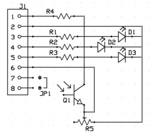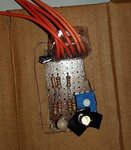xpress_embedo
Advanced Member level 4

Hello! Everyone,
Is there any method or sensor available in market, by which i can sense the color of an object.
I saw one sensor TCS3200, but the problem with this sensor is that, you have to touch the object with this sensor to measure its color, while in my requirement, i have to sense the color of the object which can be present anywhere less than 30 cm.
Any Suggestions.
Is there any method or sensor available in market, by which i can sense the color of an object.
I saw one sensor TCS3200, but the problem with this sensor is that, you have to touch the object with this sensor to measure its color, while in my requirement, i have to sense the color of the object which can be present anywhere less than 30 cm.
Any Suggestions.







